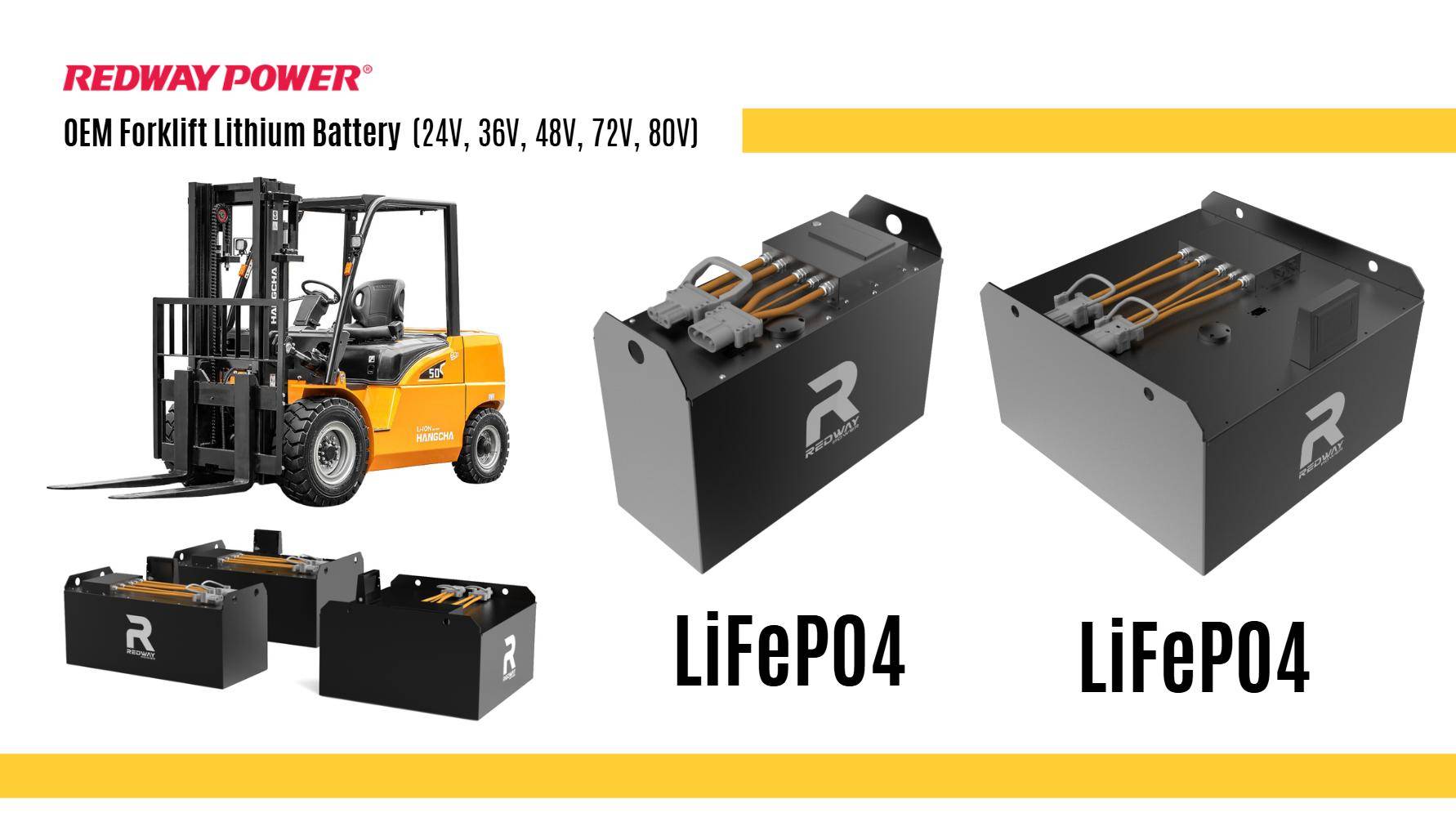
Blog
What Are the Latest Innovations in LiFePO4 Forklift Battery Technology

LiFePO4 (lithium iron phosphate) forklift batteries have revolutionized material handling with enhanced energy density, faster charging, and longer lifespans. Recent innovations include smart BMS integration, modular designs for scalability, and improved thermal management. These advancements reduce downtime, lower costs, and support sustainability, making LiFePO4 the preferred choice over traditional lead-acid batteries in modern warehouses.
How Has Energy Density Improved in LiFePO4 Forklift Batteries?
Modern LiFePO4 batteries achieve higher energy density through nanostructured cathodes and optimized cell chemistry. This allows compact designs to store more power, extending operational runtime by 20-30% compared to older models. For example, Redway’s 48V 600Ah battery now delivers 8-10 hours of continuous use, minimizing mid-shift replacements.
Recent breakthroughs in electrode engineering have further pushed energy density limits. Manufacturers now use graphene-coated anodes and silicon composite materials to increase lithium-ion mobility, achieving 160-180 Wh/kg in commercial models. This enables smaller battery footprints while maintaining capacity – a critical advantage for warehouses with space constraints. Field tests in automotive logistics hubs show 22% fewer battery swaps during 24/7 operations, translating to 450+ additional pallet moves per forklift daily.
What Role Do Smart BMS Play in LiFePO4 Battery Efficiency?
Advanced Battery Management Systems (BMS) monitor voltage, temperature, and charge cycles in real-time. They prevent overcharging, balance cell performance, and predict maintenance needs. Smart BMS can integrate with IoT platforms, enabling remote diagnostics and reducing unplanned downtime by 40% in industrial settings.
Fourth-generation BMS now employ machine learning algorithms to analyze historical data from 50+ parameters. These systems optimize charging patterns based on usage trends, extending cycle life by 18%. For cold chain operations, adaptive BMS automatically preheat batteries to -10°C within minutes, ensuring consistent performance in freezer warehouses. Integration with warehouse management software allows predictive fleet scheduling – if a battery’s health drops below 85%, the system automatically assigns the forklift to lighter duty cycles until maintenance.
Why Are Modular Designs Transforming Forklift Battery Flexibility?
Modular LiFePO4 systems allow operators to add/remove battery packs based on power demands. This scalability supports multi-shift operations without full replacements. For instance, a 30kWh system can expand to 60kWh for peak seasons, cutting upfront costs by 35% while maintaining compatibility with existing forklift models.
How Does Thermal Management Enhance LiFePO4 Safety and Longevity?
Liquid-cooled thermal systems maintain optimal temperatures (-20°C to 60°C) during rapid charging. This prevents thermal runaway and extends cycle life beyond 4,000 charges. Companies like Redway use phase-change materials to absorb excess heat, ensuring stable performance in cold storage or high-temperature environments.
Can LiFePO4 Batteries Integrate With Renewable Energy Systems?
Yes. LiFePO4 forklifts can pair with solar/wind energy via bidirectional charging. Excess warehouse solar power charges batteries during off-hours, while stored energy can feed back into grids during peak demand. This circular energy model cuts CO2 emissions by up to 65% annually for medium-sized facilities.
- Why Is LiFePO4 the Future of Forklift Batteries?
- What Are the Latest Innovations in LiFePO4 Forklift Battery Technology
- Why Are LiFePO4 Batteries Dominating Material Handling Markets?
- What Are the Latest Forklift Battery Regulations?
- Why Are Companies Switching to LiFePO4 Forklift Batteries?
- How Can You Stay Updated on Forklift Battery Technology Events?
What Cost Savings Do LiFePO4 Batteries Offer Over Lead-Acid?
Despite higher upfront costs, LiFePO4 batteries save 50-60% over 5 years due to zero maintenance, 3x longer lifespan, and 30% faster charging. A 2024 study showed warehouses reducing energy costs by $18,000/year per forklift by eliminating watering, equalization charges, and disposal fees associated with lead-acid.
| Cost Factor | LiFePO4 | Lead-Acid |
|---|---|---|
| Lifespan | 8-10 years | 3-5 years |
| Energy Efficiency | 95% | 80% |
| Monthly Maintenance | $0 | $120 |
Expert Views
“LiFePO4 isn’t just an upgrade—it’s a paradigm shift,” says Dr. Elena Marquez, Redway’s Chief Battery Engineer. “Our hybrid cooling tech boosts cycle life beyond 6,000 charges while enabling 15-minute fast charging. Pair that with AI-driven BMS, and warehouses achieve 99.5% uptime. The next frontier? Solid-state LiFePO4 cells doubling energy density by 2027.”
Conclusion
LiFePO4 forklift battery innovations are redefining industrial efficiency through smarter management, adaptable designs, and eco-friendly integration. As thermal and energy density breakthroughs accelerate, these batteries will dominate the $4.7B material handling market, offering unmatched ROI and sustainability for logistics operations worldwide.
FAQ
- How long do LiFePO4 forklift batteries last?
- LiFePO4 batteries typically last 8-10 years or 4,000-6,000 cycles, outperforming lead-acid’s 1,200-cycle lifespan.
- Are LiFePO4 forklift batteries compatible with all forklifts?
- Most modern electric forklifts support LiFePO4 upgrades, though voltage and BMS compatibility should be verified with manufacturers like Redway.
- Do LiFePO4 batteries require special charging infrastructure?
- They work with standard chargers but achieve optimal performance using CC-CV (constant current-constant voltage) systems supporting 1C-2C fast charging.








